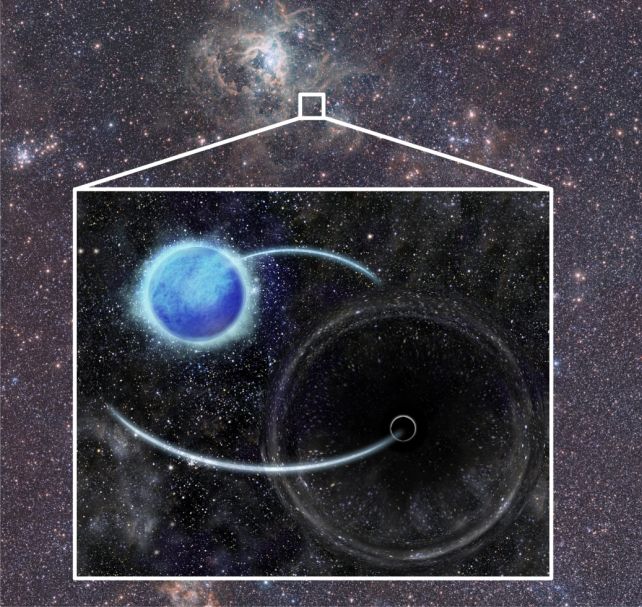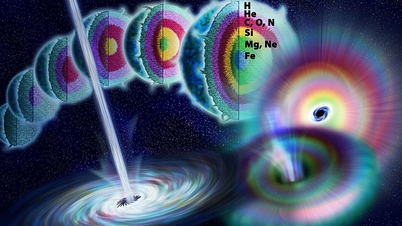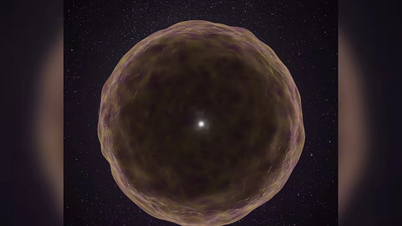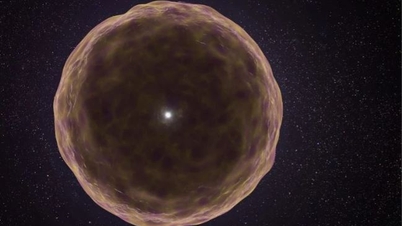(NLDO) - A group of scientists have been searching for the truth about giant and brilliant stars that suddenly and mysteriously disappeared from the sky.
According to the widely accepted theory, stars have a certain lifespan and eventually die. It is a fiery death - called a supernova - where the star explodes and shoots its contents out into space.
But scientists have found some massive stars that disappear without any sign of supernovae. They are clearly visible in older surveys, only to disappear completely in later surveys without any reasonable explanation.
Now, a pair of objects in a nearby galaxy may provide the answer.

The pair of objects VFTS 243 consists of a giant star and a mysterious black hole - Photo: ESO
According to Science Alert, the pair of objects targeted is VFTS 243 in the Large Magellanic Cloud - a satellite galaxy of Earth's Milky Way galaxy.
VFTS 243 consists of a black hole and a companion star. The system shows no signs of the supernova explosion that would have accompanied the formation of the black hole.
An international research team led by astrophysicist Alejandro Vigna-Gómez from the Niels Bohr Institute (Denmark) and the Max Planck Institute for Astrophysics (Germany) has come up with the most convincing explanation yet: In addition to dying brightly, giant stars also die suddenly.
“If one were standing looking up at such a star that was about to collapse completely, at the right moment it could appear to suddenly shut off and disappear from the sky,” said Dr. Vigna-Gómez.
So what happens to stars after they die?
According to theory, after a star first explodes as a supernova, its core collapses into a neutron star or a white dwarf depending on its size.
After a while, this neutron star or white dwarf may explode again, this time leaving behind only a black hole or a nebula.
According to the new model, massive stars are perfectly capable of "skipping the stage", meaning that instead of exploding, the core - under the pressure of its own intense gravity - collapses directly into a dark black hole.
The black hole in VFTS 243 could have formed like this. This black hole has a mass 10 times that of the Sun, and is associated with a 7.4 million-year-old star about 25 times the mass of the Sun.
New research has determined that the two objects orbited each other in a near-circular orbit.
It is the clearest evidence yet that the black hole was not displaced from its position as a star by a supernova explosion.
This means that the ancient star did not necessarily explode as a supernova, but only experienced a failed explosion. It is very possible that the rest of the star was also "cleaned up" by the sudden formation of the black hole, leaving nothing visible in the sky.
Source: https://nld.com.vn/hang-tram-ngoi-sao-vut-bien-thanh-lo-den-tren-bau-troi-196240527124114381.htm



![[Photo] Prime Minister Pham Minh Chinh chairs the second meeting of the Steering Committee on private economic development.](https://vphoto.vietnam.vn/thumb/1200x675/vietnam/resource/IMAGE/2025/11/01/1762006716873_dsc-9145-jpg.webp)










































































































Comment (0)